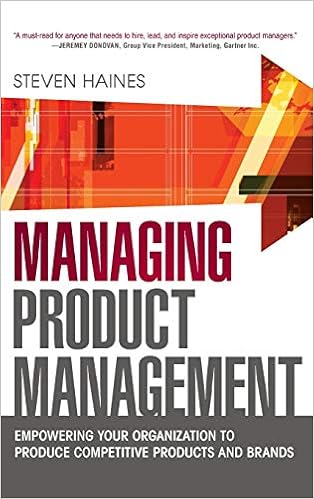Book Review
It’s no surprise we, at Technology Multipliers, like Managing Product Management because few positions have more impact in the success of a technology company than the product management function. Product Management is the critical link through which products and portfolios are planned, developed, launched, managed, and retired.
The book is aimed at executives and owners striving to build, empower, and sustain successful product management organizations. The author, Steven Haines, is also the author of The Product Manager’s Desk Reference, one of the most popular product management books.
The main message of the Managing Product Management is that when product management is well understood, properly positioned, and empowered with competent professionals, it can be the heart and soul of innovative businesses that create winning products and solutions. We completely agree!
Mr. Haines argues “product management function is not well understood in most companies and improperly positioned in the organizational structure”. Our experience confirms that. We have seen product management treated like pre-sales support or marketing in technology companies with unrealistic product development timelines. We have also witnessed product management treated like project management in companies with mature product portfolios.
The book starts with putting product management in context. In this introductory module, Haines suggests an assessment of prior reorganizations to understand how product management evolved to its current state. He provides insights on how to best situate Product Management in the company and how to create a consistent, durable structure that can remain aligned with the organization strategy.
In our experience, close connections between product managers and customers are necessary. And, open lines of communication between product managers, the CEO, and senior executives are critical. Whether the product management organization is situated in Marketing and Engineering is less important than the product management team being competent and the product management process being consistent.
In the second module called “Clarify”, Haines articulates product management as “the business management of product, product line, and product portfolio”. He then goes on to define six simple things executives can do to get everyone in the other functions to get into the “product management sandbox”.
One of the things we really liked about this module was the focus on systemic awareness and holistic thinking as non-negotiable requirements. A key take-away from this module is the Product Lifecycle Model that “organizes” the three integrated product management processes and “clarifies” how they map to the new product development NPD stage-gate process:
- New Product Planning
- New Product Introduction or NPI
- Post-Launch Product Management
Visit Sequent Learning Networks to learn more about Haines’ product lifecycle model. Another key take-away from this module was the correlation between longevity of product management teams and success of well-run companies.
In the third module “Cultivate”, Haines clarifies the role of the product manager to improve staffing strategies. He defines the seven competency areas required for high performance product management:
1. Developing marketing insights
2. Crafting effective strategies
3. Planning and executing product launches on time and under budget
4. Managing and monitoring the financial and market performance of products and portfolios
5. Translating and interpreting data and information from various sources into cohesive decisions
6. Driving action through the organization and building shared accountability
7. Using basic project management skills
This module also provides practical guidelines and useful tips for creating a well-defined process to seek, recruite, cultivate, and enable product management talent.
The final module, “Continuity”, covers three key topics for continuous improvement of the product management function:
1. Building a knowledge-based community of practice for product management
2. Designing and sponsoring cross-functionality product teams
3. Embedding a governance model to sustain product management
While this module offers some useful information for small and mid-size companies, it is primarily targeted for large corporations.
Read the Technology Multipliers product management guide and watch our product management webinar to learn more about our points of view regarding product management for small and medium size technology companies.
In summary, we highly recommend Managing Product Management to executives interested in building and sustaining high performing product management organizations.

